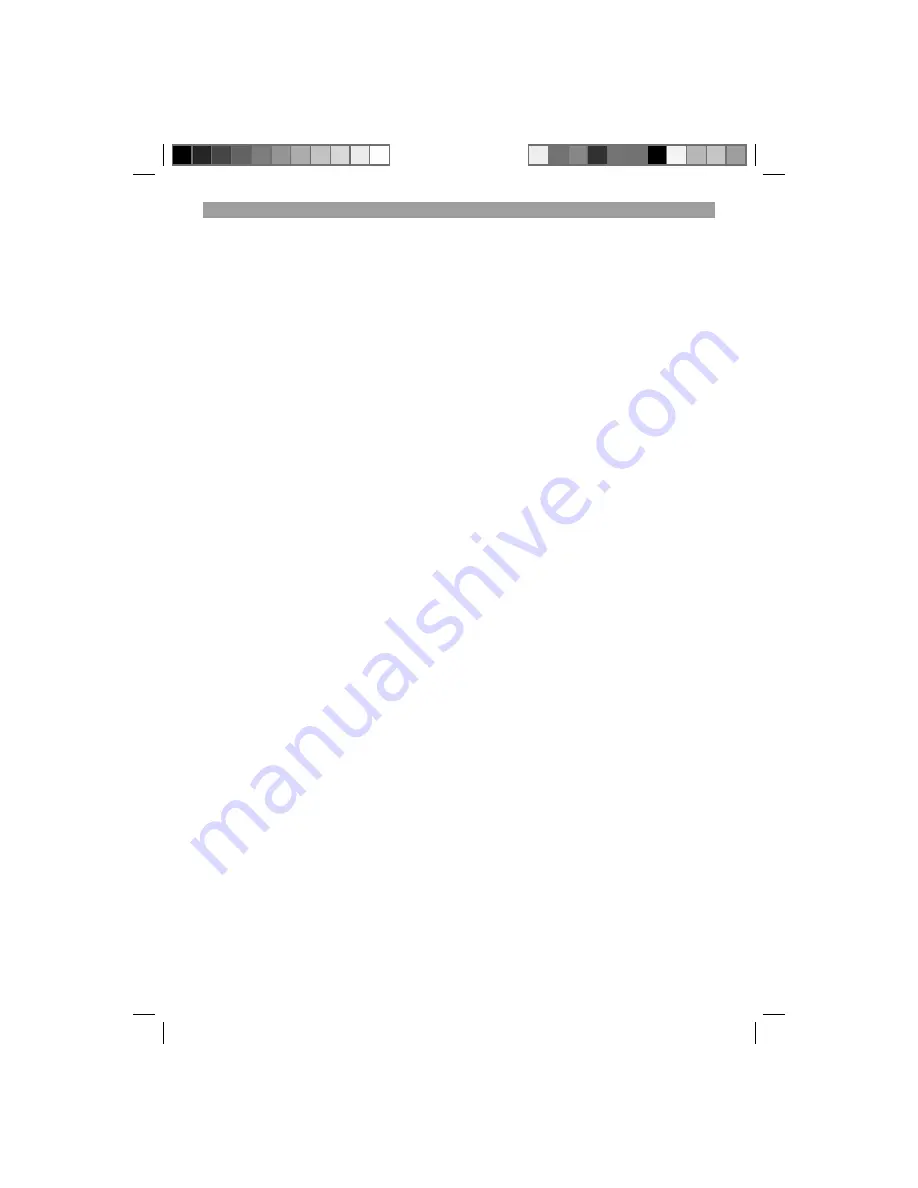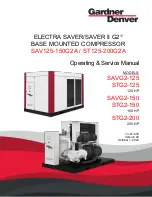
GB/IE
- 14 -
9.3 Safety valve (Figure 2)
The safety valve (19) has been set for the highest
permitted pressure of the pressure vessel. It is
prohibited to adjust the safety valve or remove its
seal. Actuate the safety valve from time to time to
ensure that it works when required. Pull the ring
with suffi cient force until you can hear the com-
pressed air being released. Then release the ring
again.
9.4 Checking the oil level at regular inter-
vals (Figure 11)
Place the compressor on a level and straight
surface. The oil level must be between the two
marks MAX and MIN on the oil dipstick (16). Oil
change: we recommend SAE 15W 40 or equiva-
lent. The original oil fi lling must be changed after
100 hours in operation; thereafter the oil must be
drained and replaced with new oil after every
300 hours in operation.
9.5 Changing the oil (Figure 1,10, 11)
Switch off the motor and pull the mains plug out
of the socket. After releasing any air pressure (see
9.7.1) you can unscrew the oil drain screw (18)
from the compressor pump (13). To prevent the oil
from running out in an uncontrolled manner, hold
a small metal chute under the opening and collect
the oil in a container. If the oil does not drain out
completely, we recommend tilting the compressor
slightly. When the oil has drained out, refi t the oil
drain screw (18).
Dispose of the old oil at a drop-off point
for old oil.
To fi ll in the correct quantity of oil, make sure that
the compressor stands on an even surface. Fill
new oil through the oil fi ller opening (21) until it
comes up to the maximum level. Check the oil
level by inserting the dipstick. Do not exceed
the maximum fi lling quantity. Overfi lling the
equipment may result in damage. Reinsert the oil
sealing plug (16) into the oil fi ller opening (21).
9.6 Cleaning the intake fi lter
(Fig. 2, 3, 12)
The intake fi lters (15) prevent the drawing in
of dust and dirt. It is essential to clean these
fi lters after at least every 300 hours in opera-
tion. A clogged intake fi lter will decrease the
compressor’s performance dramatically.
Remove the intake fi lters from the equipment by
unscrewing them. The fi lter housing (D) is plugged
on the fi lter cover (C) and can be removed by ap-
plying slight pressure to the fi lter cover. Carefully
tap out the air fi lters (F), the fi lter cover and the
fi lter housing. Then blow out these parts with com-
pressed air (approx. 3 bar) and reinstall in reverse
order. The fi lter cover and the fi lter housing have
different latching positions. When you assemble
the intake fi lter, make sure that the intake opening
faces down.
9.7 Storage
Important!
Pull out the mains plug and ventilate the
equipment and all connected pneumatic
tools (see 9.7.1). Switch off the compres-
sor and make sure that it is secured in
such a way that it cannot be started up
again by any unauthorized person.
Important!
Store the compressor only in a dry lo-
cation which is not accessible to unau-
thorized persons. Always store upright,
never tilted! Oil may leak out!
9.7.1 Releasing excess pressure
Release the excess pressure by switching off the
compressor and using the compressed air which
is still left in the pressure vessel, e.g. with a com-
pressed air tool running in idle mode or with a
blow-out pistol.
Anl_4010166.indb 14
Anl_4010166.indb 14
25.03.13 16:01
25.03.13 16:01















































